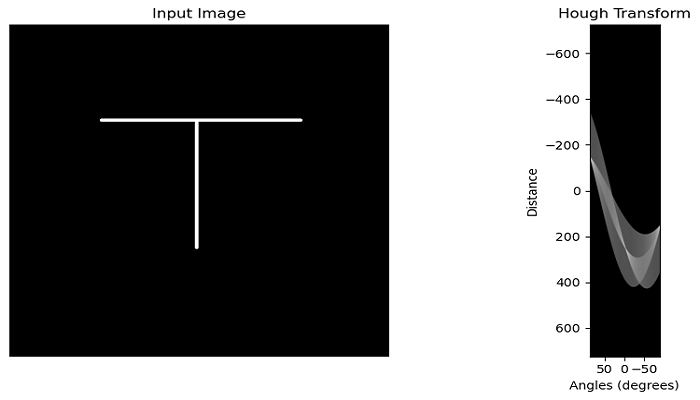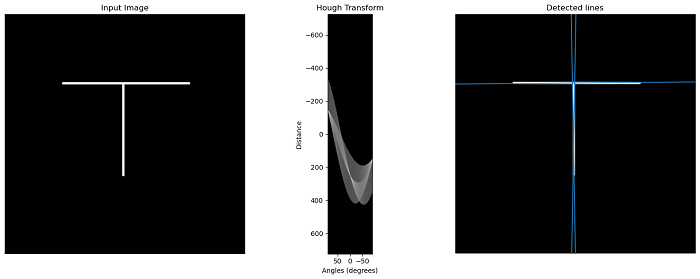
- Scikit Image – Introduction
- Scikit Image - Image Processing
- Scikit Image - Numpy Images
- Scikit Image - Image datatypes
- Scikit Image - Using Plugins
- Scikit Image - Image Handlings
- Scikit Image - Reading Images
- Scikit Image - Writing Images
- Scikit Image - Displaying Images
- Scikit Image - Image Collections
- Scikit Image - Image Stack
- Scikit Image - Multi Image
- Scikit Image - Data Visualization
- Scikit Image - Using Matplotlib
- Scikit Image - Using Ploty
- Scikit Image - Using Mayavi
- Scikit Image - Using Napari
- Scikit Image - Color Manipulation
- Scikit Image - Alpha Channel
- Scikit Image - Conversion b/w Color & Gray Values
- Scikit Image - Conversion b/w RGB & HSV
- Scikit Image - Conversion to CIE-LAB Color Space
- Scikit Image - Conversion from CIE-LAB Color Space
- Scikit Image - Conversion to luv Color Space
- Scikit Image - Conversion from luv Color Space
- Scikit Image - Image Inversion
- Scikit Image - Painting Images with Labels
- Scikit Image - Contrast & Exposure
- Scikit Image - Contrast
- Scikit Image - Contrast enhancement
- Scikit Image - Exposure
- Scikit Image - Histogram Matching
- Scikit Image - Histogram Equalization
- Scikit Image - Local Histogram Equalization
- Scikit Image - Tinting gray-scale images
- Scikit Image - Image Transformation
- Scikit Image - Scaling an image
- Scikit Image - Rotating an Image
- Scikit Image - Warping an Image
- Scikit Image - Affine Transform
- Scikit Image - Piecewise Affine Transform
- Scikit Image - ProjectiveTransform
- Scikit Image - EuclideanTransform
- Scikit Image - Radon Transform
- Scikit Image - Line Hough Transform
- Scikit Image - Probabilistic Hough Transform
- Scikit Image - Circular Hough Transforms
- Scikit Image - Elliptical Hough Transforms
- Scikit Image - Polynomial Transform
- Scikit Image - Image Pyramids
- Scikit Image - Pyramid Gaussian Transform
- Scikit Image - Pyramid Laplacian Transform
- Scikit Image - Swirl Transform
- Scikit Image - Morphological Operations
- Scikit Image - Erosion
- Scikit Image - Dilation
- Scikit Image - Black & White Tophat Morphologies
- Scikit Image - Convex Hull
- Scikit Image - Generating footprints
- Scikit Image - Isotopic Dilation & Erosion
- Scikit Image - Isotopic Closing & Opening of an Image
- Scikit Image - Skelitonizing an Image
- Scikit Image - Morphological Thinning
- Scikit Image - Masking an image
- Scikit Image - Area Closing & Opening of an Image
- Scikit Image - Diameter Closing & Opening of an Image
- Scikit Image - Morphological reconstruction of an Image
- Scikit Image - Finding local Maxima
- Scikit Image - Finding local Minima
- Scikit Image - Removing Small Holes from an Image
- Scikit Image - Removing Small Objects from an Image
- Scikit Image - Filters
- Scikit Image - Image Filters
- Scikit Image - Median Filter
- Scikit Image - Mean Filters
- Scikit Image - Morphological gray-level Filters
- Scikit Image - Gabor Filter
- Scikit Image - Gaussian Filter
- Scikit Image - Butterworth Filter
- Scikit Image - Frangi Filter
- Scikit Image - Hessian Filter
- Scikit Image - Meijering Neuriteness Filter
- Scikit Image - Sato Filter
- Scikit Image - Sobel Filter
- Scikit Image - Farid Filter
- Scikit Image - Scharr Filter
- Scikit Image - Unsharp Mask Filter
- Scikit Image - Roberts Cross Operator
- Scikit Image - Lapalace Operator
- Scikit Image - Window Functions With Images
- Scikit Image - Thresholding
- Scikit Image - Applying Threshold
- Scikit Image - Otsu Thresholding
- Scikit Image - Local thresholding
- Scikit Image - Hysteresis Thresholding
- Scikit Image - Li thresholding
- Scikit Image - Multi-Otsu Thresholding
- Scikit Image - Niblack and Sauvola Thresholding
- Scikit Image - Restoring Images
- Scikit Image - Rolling-ball Algorithm
- Scikit Image - Denoising an Image
- Scikit Image - Wavelet Denoising
- Scikit Image - Non-local means denoising for preserving textures
- Scikit Image - Calibrating Denoisers Using J-Invariance
- Scikit Image - Total Variation Denoising
- Scikit Image - Shift-invariant wavelet denoising
- Scikit Image - Image Deconvolution
- Scikit Image - Richardson-Lucy Deconvolution
- Scikit Image - Recover the original from a wrapped phase image
- Scikit Image - Image Inpainting
- Scikit Image - Registering Images
- Scikit Image - Image Registration
- Scikit Image - Masked Normalized Cross-Correlation
- Scikit Image - Registration using optical flow
- Scikit Image - Assemble images with simple image stitching
- Scikit Image - Registration using Polar and Log-Polar
- Scikit Image - Feature Detection
- Scikit Image - Dense DAISY Feature Description
- Scikit Image - Histogram of Oriented Gradients
- Scikit Image - Template Matching
- Scikit Image - CENSURE Feature Detector
- Scikit Image - BRIEF Binary Descriptor
- Scikit Image - SIFT Feature Detector and Descriptor Extractor
- Scikit Image - GLCM Texture Features
- Scikit Image - Shape Index
- Scikit Image - Sliding Window Histogram
- Scikit Image - Finding Contour
- Scikit Image - Texture Classification Using Local Binary Pattern
- Scikit Image - Texture Classification Using Multi-Block Local Binary Pattern
- Scikit Image - Active Contour Model
- Scikit Image - Canny Edge Detection
- Scikit Image - Marching Cubes
- Scikit Image - Foerstner Corner Detection
- Scikit Image - Harris Corner Detection
- Scikit Image - Extracting FAST Corners
- Scikit Image - Shi-Tomasi Corner Detection
- Scikit Image - Haar Like Feature Detection
- Scikit Image - Haar Feature detection of coordinates
- Scikit Image - Hessian matrix
- Scikit Image - ORB feature Detection
- Scikit Image - Additional Concepts
- Scikit Image - Render text onto an image
- Scikit Image - Face detection using a cascade classifier
- Scikit Image - Face classification using Haar-like feature descriptor
- Scikit Image - Visual image comparison
- Scikit Image - Exploring Region Properties With Pandas
Scikit Image - Line Hough Transform
The Hough Transform is a technique used in image analysis and computer vision to detect shapes, patterns, or structures within an image that can be represented in a mathematical form. And the Line Hough Transform is a specific version of this technique that focuses on identifying lines.
In the context of lines, the Hough Transform works by transforming the lines ( y = mx + b) into a parameter space representation (Hough space) where lines are represented by points. Each point in Hough space corresponds to a possible line in the original image.
In the scikit-image library, the Line Hough Transform can be performed using the transform.hough_line() function, it applies the Line Hough Transform and returns the hough space accumulator, as well as the angles and distances corresponding to the detected lines.
Once you have the accumulator array, you can use the transform.hough_line_peaks() function to find the strongest signals (peaks) in the accumulator. These peaks represent the detected lines, and the angles and distances can be used to reconstruct the lines in the original image space.
Using the skimage.transform.hough_line() function
This function is used to perform a straight line Hough transform on an input image.
Syntax
Following is the syntax of this function −
skimage.transform.hough_line(image, theta=None)
Parameters
- image: This parameter should be a 2D NumPy array (ndarray) representing the input image with nonzero values indicating edges. This means that the image should be a binary image where edges are marked with non-zero values and the rest is zero.
- theta (optional): An optional parameter that specifies the angles at which to compute the Hough transform. It is a 1D NumPy array of double values representing angles in radians. By default, it generates a vector of 180 angles evenly spaced in the range from -pi/2 to pi/2.
- circle (optional): A boolean flag that determines whether to assume the image is zero outside the inscribed circle. If set to True, the width of each projection in the resulting sinogram will be equal to the minimum of the image's width and height.
Example
Here is an example that demonstrates how to apply the Hough transform to an input image using the hough_line() function.
import numpy as np
import matplotlib.pyplot as plt
from skimage import transform, io
# Load an input image
image = io.imread('Images/text_image.png', as_gray=True)
# Apply the Hough transform
hspace, angles, distances = transform.hough_line(image)
# Plot the original and transformed images side by side
fig, axes = plt.subplots(1, 2, figsize=(10, 5))
axes[0].imshow(image, cmap='gray')
axes[0].set_title('Input Image')
axes[0].axis('off')
axes[1].imshow(np.log(1 + hspace),
extent=[np.rad2deg(angles[-1]), np.rad2deg(angles[0]), distances[-1], distances[0]],
cmap=plt.cm.gray, aspect=1/1.5)
axes[1].set_title('Hough Transform')
axes[1].set_xlabel('Angles (degrees)')
axes[1].set_ylabel('Distance')
plt.tight_layout()
plt.show()
Output
On executing the above program, you will get the following output −

Using the skimage.transform.hough_line_peaks() function
This function is used to identify prominent peaks in the Hough space obtained from the straight line Hough transform. This function helps you find the most significant lines separated by a certain angle and distance in a Hough transform.
Syntax
Following is the syntax of this function −
skimage.transform.hough_line_peaks(hspace, angles, dists, min_distance=9, min_angle=10, threshold=None, num_peaks=inf)
Parameters
- hspace: A 2D array representing the Hough space generated by the hough_line() function.
- angles: An array of angles returned by the hough_line function. These angles correspond to the detected lines in radians.
- dists: An array of distances returned by the hough_line function. These distances represent the distances from the origin to the detected lines.
- min_distance: An optional parameter that specifies the minimum distance separating lines. It determines the maximum filter size for the first dimension of the Hough space.
- min_angle: An optional parameter that specifies the minimum angle separating lines. It determines the maximum filter size for the second dimension of the Hough space.
- threshold: An optional parameter that defines the minimum intensity of peaks to be considered. The default threshold is set to 0.5 times the maximum value in the Hough space.
- num_peaks: An optional parameter that specifies the maximum number of peaks to be returned. When the number of detected peaks exceeds this value, only the num_peaks coordinates with the highest peak intensities are returned.
Return Value
It returns a tuple of arrays containing the peak values in the Hough space, the corresponding angles, and the distances. These peaks represent the most prominent lines identified by the Hough transform.
Example
In this following example we will see how to detect peaks in the Hough space using the hough_line_peaks() function.
import numpy as np
import matplotlib.pyplot as plt
from skimage import transform, io
# Load an input image
image = io.imread('Images/text_image.png', as_gray=True)
# Set a precision of 0.05 degree.
tested_angles = np.linspace(-np.pi / 2, np.pi / 2, 360, endpoint=False)
# Apply Classic straight-line Hough transform
hspace, angles, distances = transform.hough_line(image, theta=tested_angles)
# Plot the original and transformed images side by side
fig, axes = plt.subplots(1, 3, figsize=(15, 6))
axes[0].imshow(image, cmap='gray')
axes[0].set_title('Input Image')
axes[0].axis('off')
axes[1].imshow(np.log(1 + hspace),
extent=[np.rad2deg(angles[-1]), np.rad2deg(angles[0]), distances[-1], distances[0]],
cmap=plt.cm.gray, aspect=1/1.5)
axes[1].set_title('Hough Transform')
axes[1].set_xlabel('Angles (degrees)')
axes[1].set_ylabel('Distance')
axes[2].imshow(image, cmap='gray')
axes[2].set_ylim((image.shape[0], 0))
axes[2].set_axis_off()
axes[2].set_title('Detected lines')
# Find peaks in the Hough space using the hough_line_peaks() function
for accum, angle, dist in zip(*transform.hough_line_peaks(hspace, angles, distances)):
(x0, y0) = dist * np.array([np.cos(angle), np.sin(angle)])
axes[2].axline((x0, y0), slope=np.tan(angle + np.pi/2))
plt.tight_layout()
plt.show()
Output
On executing the above program, you will get the following output −
